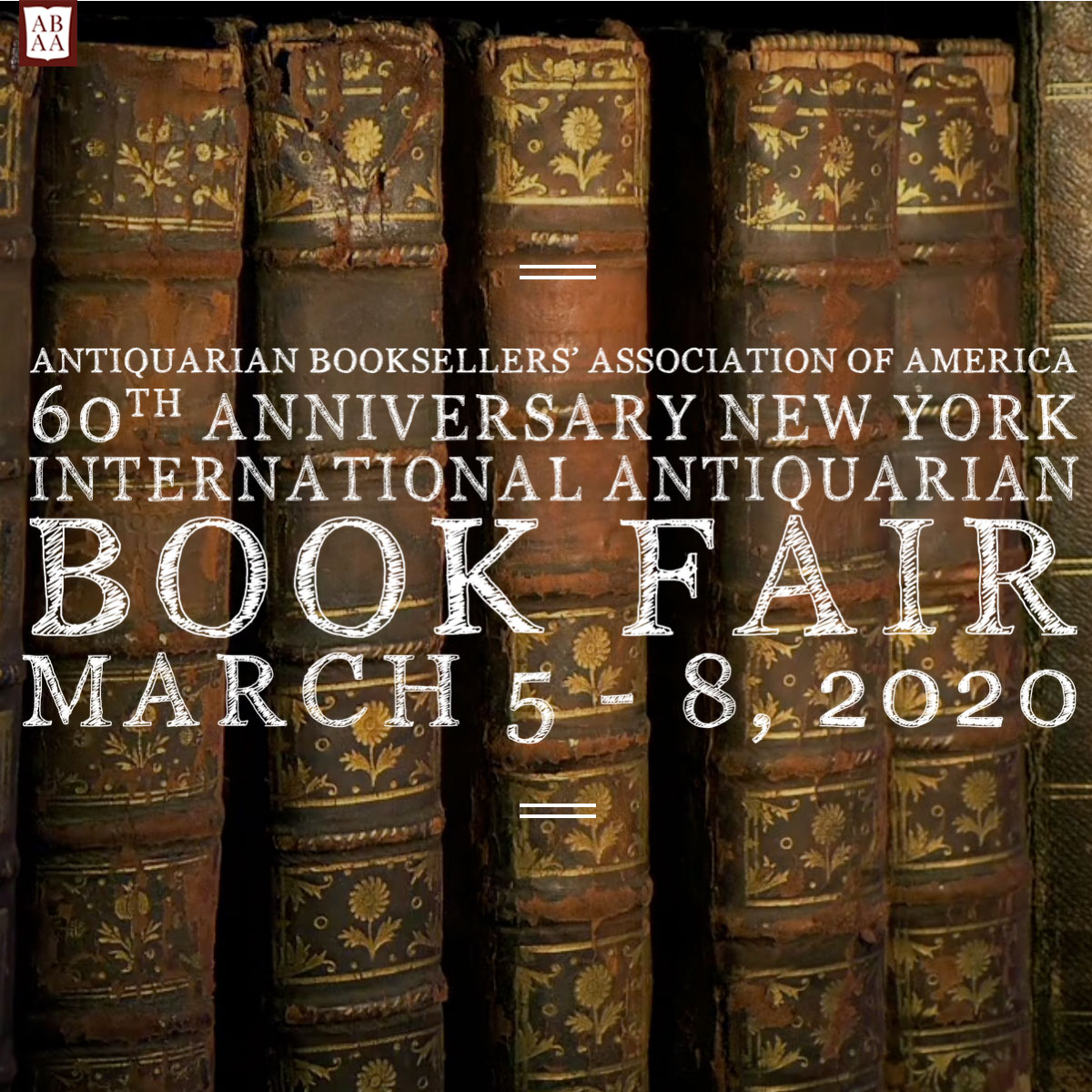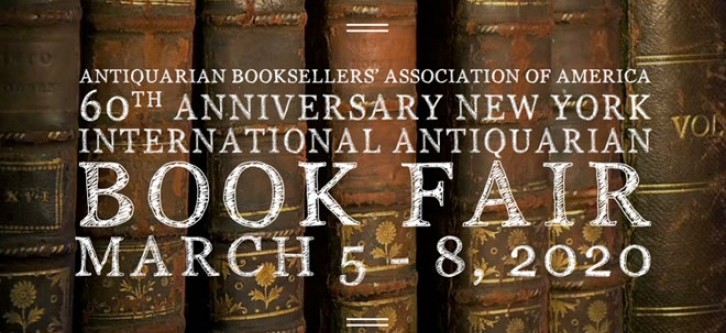Preview some of the exciting rare books and related items you'll find at the 60th annual New York International Antiquarian Book Fair.
Wells, H[erbert] G[eorge]. THE FIRST MEN IN THE MOON
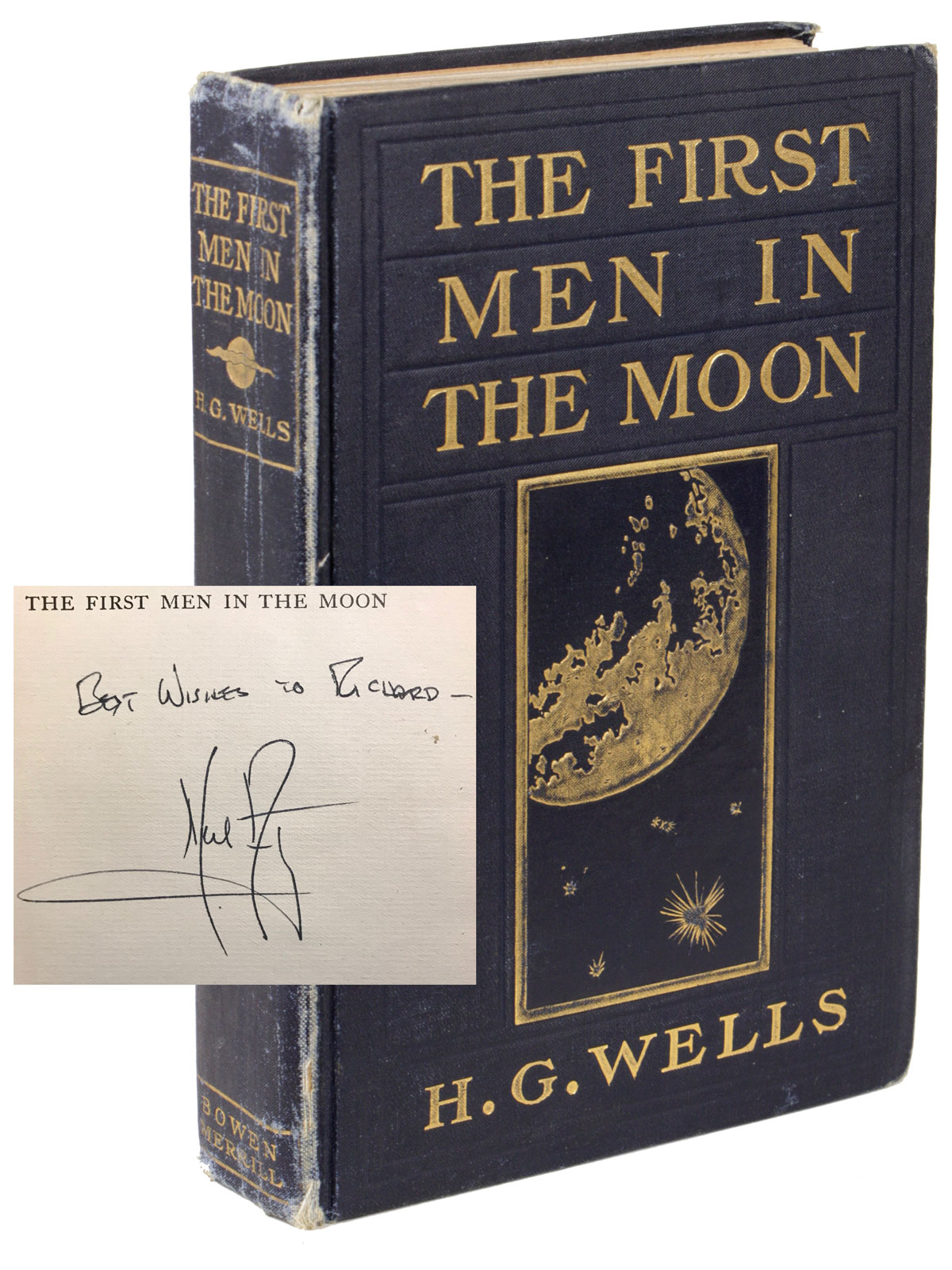
Indianapolis: The Bowen-Merrill Company, [1901]. Octavo, pp. [1-10] 1-312, twelve inserted plates with illustrations by E. Hering, title page printed in black and red, original pictorial cloth, front panel stamped in gold and blind, spine panel stamped in gold, rear panel stamped in blind.
First edition, first binding with "Bowen / Merrill" at base of spine panel, variant with moon gold stamped and author and title gold stamped on front panel. Inscribed and signed on the half title page by Apollo 11 astronaut and first man to walk on the moon, Neil Armstrong.
Preceded the British edition by approximately one month. The two editions have minor textual differences. "... a gripping adventure story as well as a historic milestone in modern science fiction." - Survey of Science Fiction Literature II, pp. 782-86. "The last and most complex [of Wells's early scientific romances] is THE FIRST MEN IN THE MOON. The two first men, Bedford and Cavor are well-contrasted, the civilization of the Selenites is excellent both as horror and satire; and the novel abounds with wonderful passages of unforced description at which Wells is unrivaled ... This lovely book also contains much of Wells's delightful humor; it has kept the joints of his discourse oiled to this day. After THE FIRST MEN IN THE MOON, Wells's science fiction novels are never quite the same." - Bleiler (ed), Science Fiction Writers, p. 28. Adapted into a feature film. Anatomy of Wonder (1976) 2-166; (1981) 1-175; (1987) 1-98; and (1995) 1-98. Bleiler, Science-Fiction: The Early Years 2335. Clareson, Science Fiction in America, 1870s-1930s 795. Lewis, Utopian Literature, p. 206. Locke, A Spectrum of Fantasy, p. 226. Locke, Voyages in Space 208. Negley, Utopian Literature: A Bibliography 1177. Sargent, British and American Utopian Literature, 1516-1985, pp. 123-24. In 333. Bleiler (1978), p. 205. Reginald 15026. Currey, p. 518 (binding A).
Bookplate affixed to front paste-down, small bookstore label affixed to lower rear paste-down, rubbing to corner tips and spine edges, rubbing and wear to spine ends, a good copy with a reasonably bright front cover with a nice associational signature.
Offered by John W. Knott, Bookseller, booth A5.
Dorothy P. Lathrop Archive
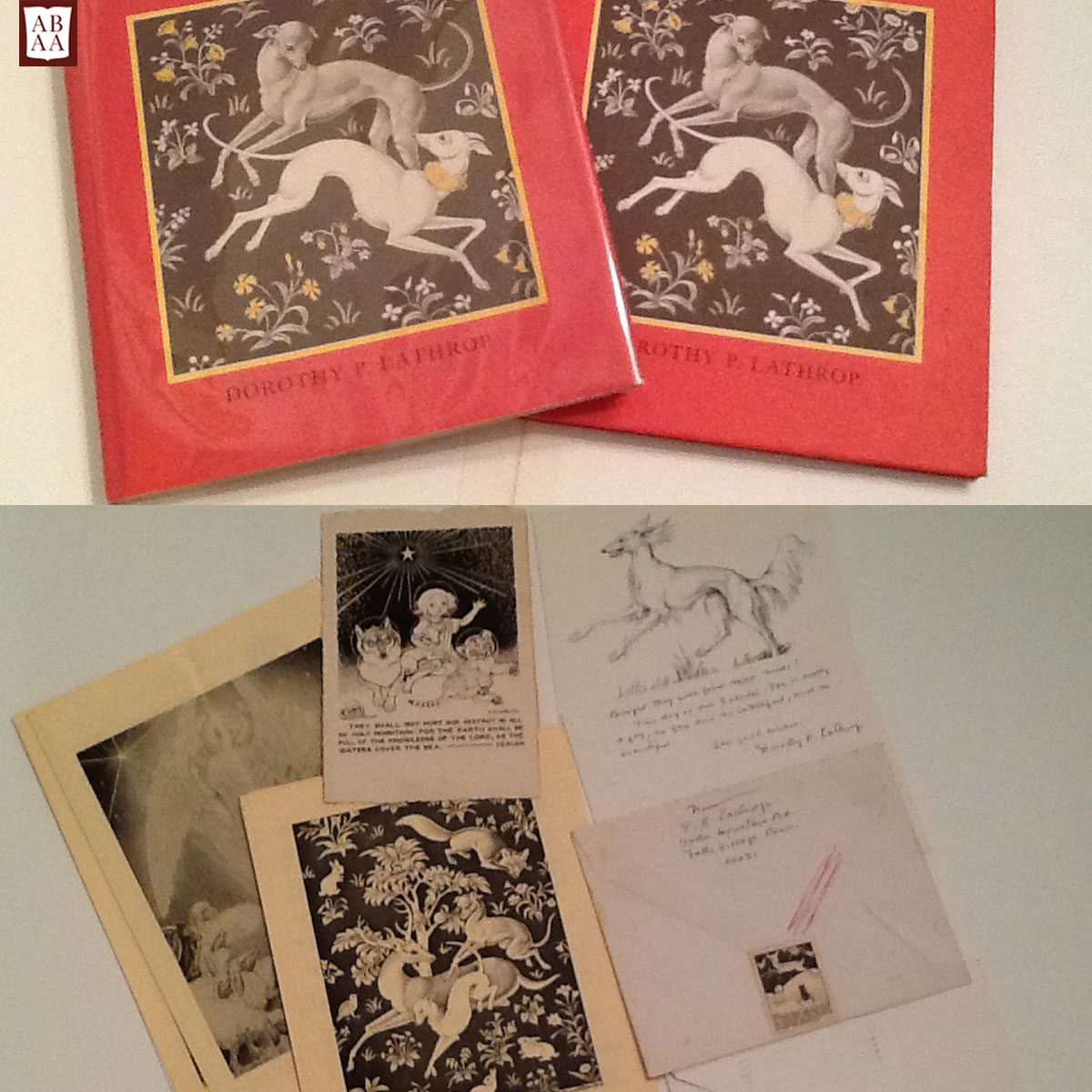
Archive includes: "Dog in the Tapestry Garden" 1st edition; 2 letters - one from Dorothy P. Lathrop with envelope, and one from Gertrude Lathrop, her sister; pen & ink b/w drawing by Dorothy Lathrop on board; one seal of her illustration on back of her letter, and 5 church programs with her illustrations on the covers.
Offered by Enchanted Books, booth A12.
JOHN TENNIEL (Alice’s Adventures in Wonderland)
Rare original pen and ink drawing, "Alice (with flamingo) Chats with the Duchess." from Lewis Carroll's "Alice's Adventures in Wonderland," (1865) signed with initials and date , "JT 1880." With Autograph Letter Signed to Fred Evans, editor of “Punch Magazine,” Aug. 25, 1854.
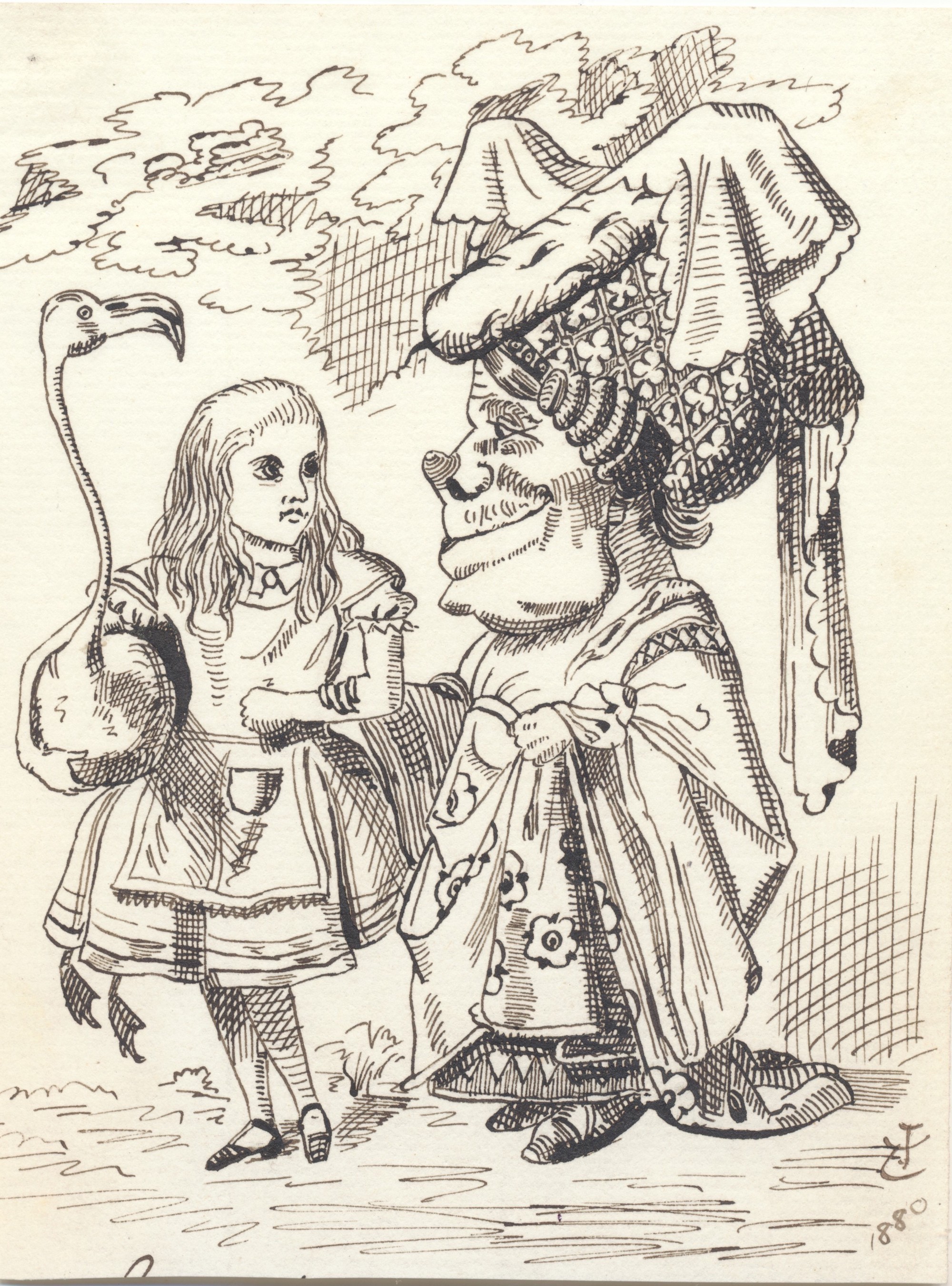
Tenniel drew the sketch in 1880 after his drawing for the first edition (1865) of "Alice's Adventures in Wonderland." He would occasionally craft drawings from "Alice" to give as gifts, and in this case the drawing was given to Fred Evans, editor of Punch Magazine. Both drawing and letter were part of the estate of Mrs. Evans.
In his two page letter written on one sheet Tenniel refers to his “zinc drawing.” "My dear Evans...so you shall have the zinc drawing tomorrow afternoon. I am quite curious to see the result of the experiment...." Signed, "John Tenniel." The experiment was the use of a zinc plate for engraving rather than the conventional steel plate.
The sketch measures 6.75 x 5 inches and the letter 4.75 /x 7.1 inches. Both float on a dark gray mat overlaid with a white mat, framed together in black satin finished wood, matted and framed in museum quality materials, in 5/8/inch black satin wood measuring together in a 16 ¾ x 13 ¾. The frame is open at the back to show the first page of the letter.
Offered by Schulson Autographs, booth B23.
PENNY MARSHALL (DIRECTOR) A LEAGUE OF THEIR OWN. VINTAGE ORIGINAL FILM SCRIPT AND AUTOGRAPHED BASEBALL
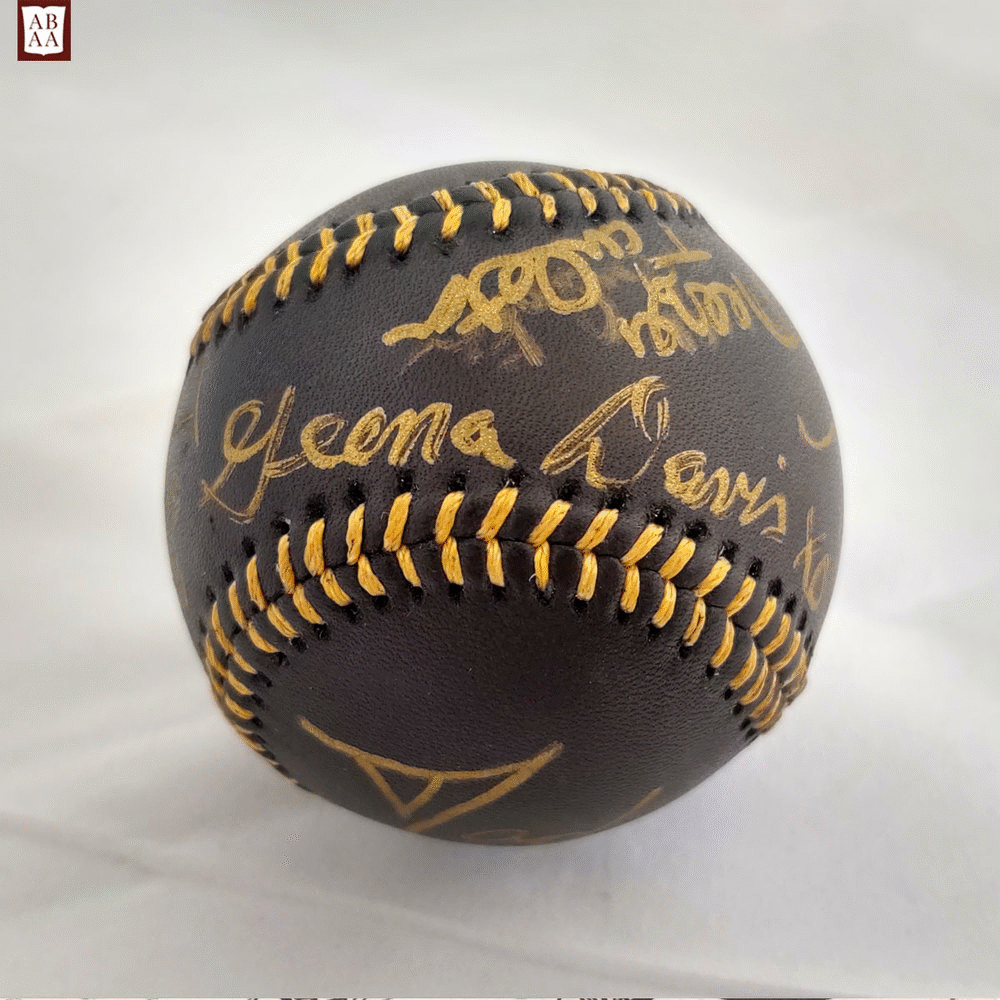
The Script
Vintage original film script. [Hollywood: Columbia Pictures / Parkway Productions], 7 June – 29 August 1991.[4],123 leaves, expanded by lettered inserts. Quarto, printed on white and eight other colored stocks. Bradbound. Last several leaves show tidemarks along lower margins and gutters, with a trace of faint rippling continuing on into a few more leaves, two ink names (see below), generally very good+.
Films focusing on the reality of women’s lives were extremely uncommon in the boys’ club that was 1990’s Hollywood. This famous movie, about the World War II women’s baseball league, and directed by Penny Marshall (at the time the one Hollywood woman director then making big box-office films) was an important outlier.
A heavily revised “Final Shooting Script,” with eight stages of substantial dated revises beyond that draft (i.e. a “rainbow” script). Lowell Ganz and Babaloo Mandel’s adaptation to the screen of a story by Kim Wilson and Kelly Candaele based on the experiences some of the players in the All-American Girls Baseball League during the years of WWII. Penny Marshall directed the highly successful film with a large ensemble cast that included Tom Hanks, Geena Davis, Madonna, and Rosie O’Donnell. This script bears the ownership signature of Les Lazarowitz, the production sound mixer, as well as his name in block print (presumably as part of script distribution) and a few relevant annotations in the text.
The Baseball
The script is accompanied by a black leather-covered baseball, signed in gold ink by a number of cast and production members, including Tom Hanks, Madonna, Geena Davis, Penny Marshall, Rosie O’Donnell, Robin Knight, Tracy Reiner, Janet Jones Gretzky, Pepper Pairie (one of the original league players) and Neezer Tarleton. The baseball is attended by a handwritten and signed attestation by Les Lazarowitz about his obtaining the signatures during the film’s production.
Offered by Walter Reuben, Inc., booth D20.
MINOTAURE. Revue Artistique et Littéraire.
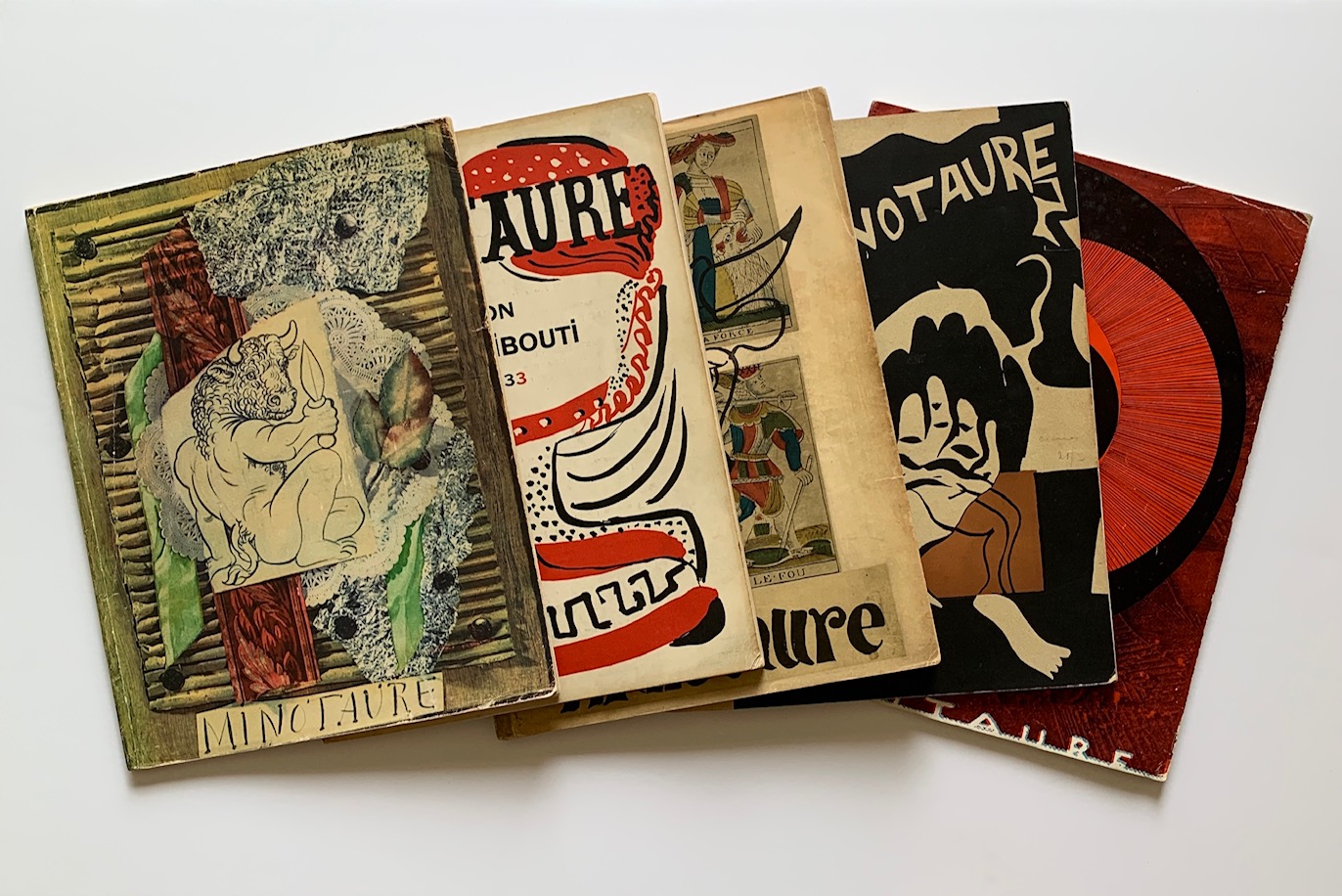
Paris: A. Skira, 1933-39. 13 issues, in 11 volumes, all published. Artistic director, Tériade; editor, André Breton. A full run in original wrappers of the lavish journal of art, literature, culture, ethnography, psychiatry, &c. One of the most important serial publications of the twentieth century. In 1933 the Swiss publisher Albert Skira approached Andre Breton about editing a new journal. Breton had previously published two journals dedicated to surrealism and explicitly political: Le Surréalisme au service de la revolution, and earlier La Révolution surréaliste. Skira was adamant that Minotaure remain outside the realm of politics. His manifesto for the journal was laid out in 1933: “Minotaure will endeavor, of set purpose, to single out, bring together and sum up the elements which have constituted the spirit of the modern movement, in order to extend its sway and impact; and it will endeavor, by way of an attempted refocusing of an encyclopedic character, to disencumber the artistic terrain in order to restore to art in movement its universal scope.” Through its brief life before the war cut short its publication, Minotaure published articles by Breton, Bataille, Lacan, Heine, Leiris, Mabille, Hugnet, Peret, Michaux, Crevel, Eluard, Prévert, Caillois, and many others, along with reproductions of ethnographic objects, and works of art by Duchamp, Bellmer, Ernst, Dalí, Miró, Masson, Magritte, Matisse, Picasso, Man Ray, Brassaï, Ubac, Giacometti, de Chirico, and others. The covers, specially commissioned for the magazine are spectacular: Pablo Picasso, issue one (1933); Gaston-Louis Roux, issue two (1933); André Derain, issues three and four (1933); Francisco Bóres, issue five (1934); Marcel Duchamp, issue six (1935); Joan Miró, issue seven (1935); Salvador Dalí, issue eight (1936); Henri Matisse, issue nine (1936); René Magritte, issue ten (1937); Max Ernst, issue eleven (1938); André Masson, issues twelve and thirteen (1939). A facsimile was published many years later, and when seen the original issues are often found bound together. A full run in the original wrappers is rare and highly desirable, especially for its possibility of exhibition, unlike bound volumes.
Offered by Triolet Rare Books, booth D31.
Barbier, Georges (illustrator). Journal Des Dames Et Des Modes 1912 -1914.
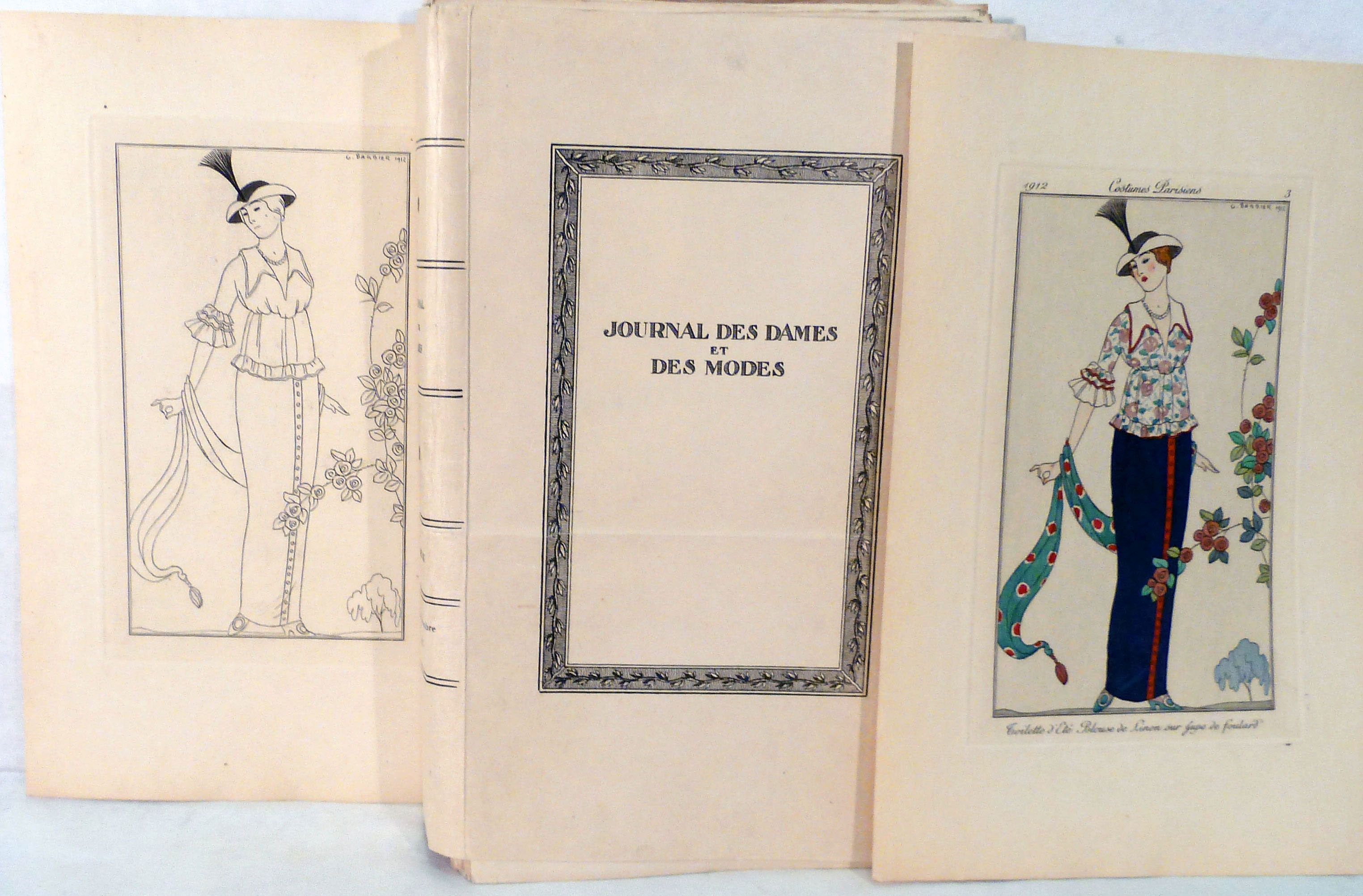
Paris: Aux Bureaux du Journal des Dames, 1912-1914. First edition. 25 x 16 cm. Limited edition, copies 14 & 15 of twelve examples numbered 6-17 on Japan Imperial with illustrations in two states -- monochrome and color (from total of 1270 copies). 184 pochoir plates, plus two supplemental unnumbered plates, "Le Choix Difficile" (Charles Martin) and "La Folie Du Jour" (Georges Barbier), also in two states. The Art Deco fashion plates by leading artists of the period, including Leon Bakst, Iribe, Martin, Brunelleschi, Simeon, Vallee, Wegener, et al: Georges Barbier, the principal illustrator. Plate 184 in colored state only, plate 183 supplied from another copy, printed on Hollande paper with watermark "Journal Des Dames."Plates1-93 from copy 14, Plates 94-184 from copy 15, both housed in original paper wrappers with spine reading Journal Des Dames, Tome III, Juillet-Decembre 1913, title within front cover rectangular decorated border. No text. Plates fresh, bright and crisp, copies in two states are rare. Loose in original wrappers as issued. Near fine.
Offerd Roy Young Bookseller, booth A40.
The Very Hungry Caterpillar by Eric Carle (Signed, First Edition)
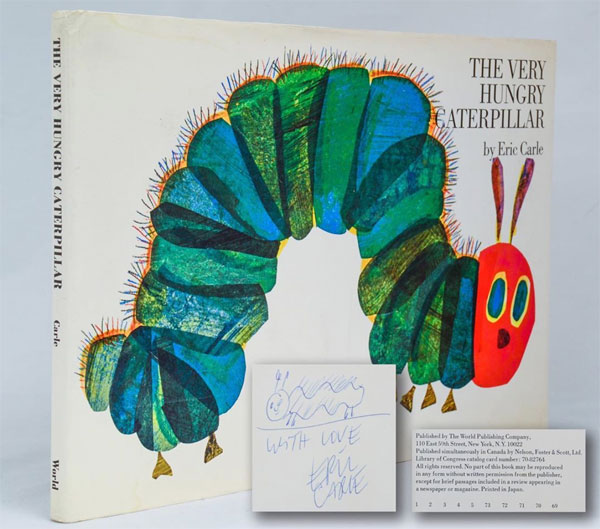
First edition, first printing, first issue of Eric Carle’s “The Very Hungry Caterpillar.” Signed “with love” and with a doodle by Eric Carle on the verso of the title-spread.
New York: The World Publishing Company, 1969.
Offered by Pryor-Johnson Rare Books, booth D30.
TWO WEEKS AFTER THE BATTLE OF STONY POINT, GENERAL WASHINGTON WRITES A MILITARY LETTER TO MAJOR GENERAL LORD STIRLING FROM WEST POINT. WASHINGTON COMMUNICATES: “I WISH TO KNOW IF SOME MIDDLE WAY CANNOT BE HAD BETWEEN THE CLOVE ROAD & THAT BY HAVERSTRAW FORGE...BY WHICH LIGHT TROOPS COULD MARCH...IN CASE IT SHOULD BE FOUND NECESSARY…FOR YOUR DIVISION TO TAKE POST THEREABOUTS…”
GEORGE WASHINGTON (1732-1799). Washington was Commander-in-Chief of the Continental Army, President of the Constitutional Convention and the first President.
LORD STIRLING (1726-1783). Stirling, who claimed the disputed title of Earl of Stirling, was Continental Army general during the American Revolution. He fought at Long Island, Trenton, Brandywine and Monmouth.
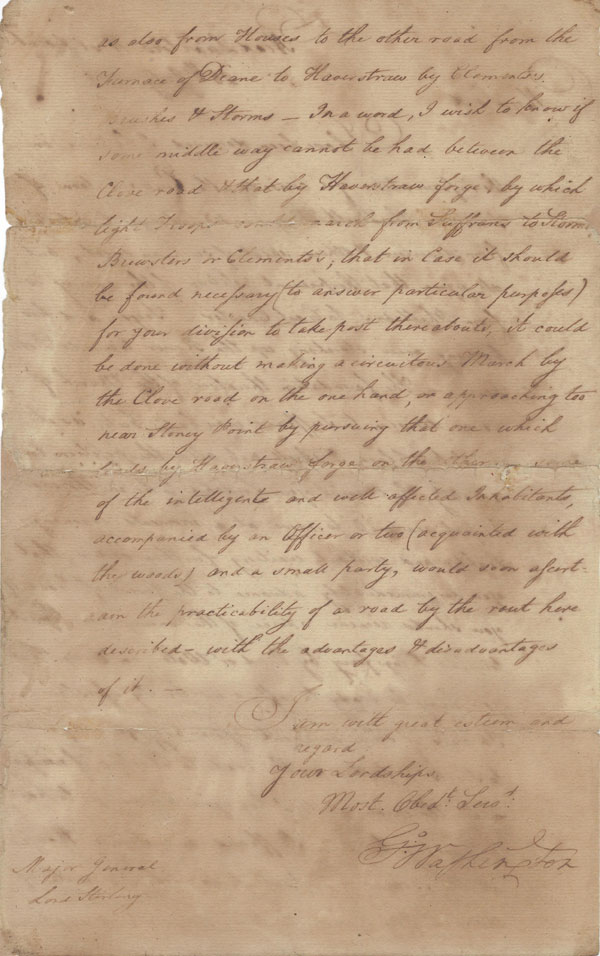
LS. 2pg. 8” x 13”. July 28, 1779. West Point. A letter signed “Go: Washington” to Major General Lord Stirling. The text is in the handwriting of Washington’s aide Caleb Gibbs. Washington communicated: “I have been deceived I believe, in the information of a considerable Embarkation of Troops in the North River - no subsequent intelligen[ce] from deserters & others speak of such an event, but all agree that the present position of the enemy is from Phillips to East Chester. Tryon and his burning crew stretching up the River towards Dobbs Ferry. The foundation therefore of the march of your division to Suffrans was bad, but as it has taken place I shall not alter the position immediately, but wish your Lordship to be in...readiness to move at a moments warning light and without waiting further orders, that you do immediately advance to the Furnace of Deane if you should receive advice of the enemys if you should receive advice of the enemys movement towards Kings ferry by land or Water...that you may be ready to afford us timely assistance...your baggage may retire to Sloots or further on the road to Chester...I beg your Lordship to have the Country between Suffrans and Simon House's at the Beaver pond...well explored as also from House's to the other road from Furnace of Deane to Haverstraw...I wish to know if some middle way cannot be had between the Clove road & that by Haverstraw forge...by which light troops could march...in Case it should be found necessary (to answer particular purposes) for your division to take post therabouts, it could be done without making a circuitous March by the Clove road on the one hand, or approaching too near Stoney Point by pursuing that one which leads by Haverstraw forge on the other - some of the intelligent and well affected Inhabitants accompanied by an officer or two (acquainted with the woods) would soon ascertain the practicability of a road by rout here described - with the advantages & disadvantages of it…”. In 1779, British general Henry Clinton attempted to secure the Hudson River, and Washington was headquartered at West Point. On the night of July 16, 1779, General Anthony Wayne led his elite troops on a daring raid to surprise the British troops at Stony Point on the east side of the Hudson River, approximately thirty miles north of New York City. This letter is published with a slight variation in The Papers of George Washington, Volume 21, pages 707 to 708. It has some uneven toning and is laminated with tissue. The recipient if of course the American General and land owner William Alexander (known here as Lord Sitrling) long the unsuccessful claimant to the Scottish title of Earl of Stirling.
Offered by Stuart Lutz Historic Documents, booth A27.
The Maltese Falcon by Dashiell Hammett (First Edition)
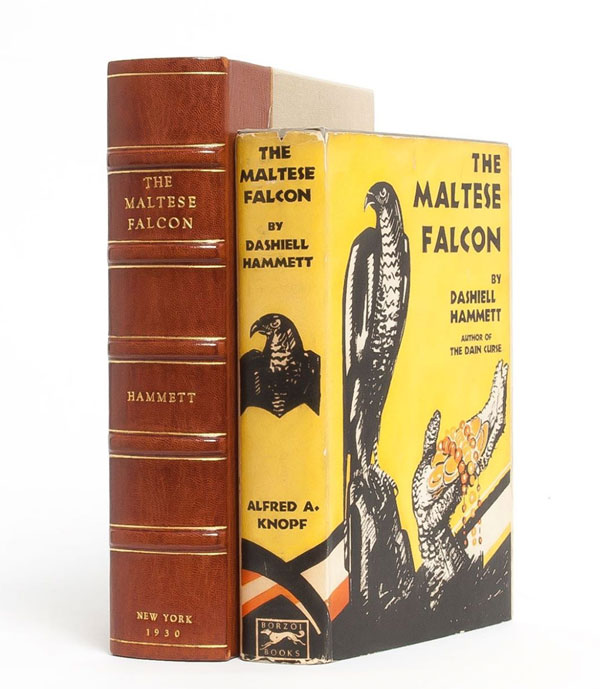
New York: Alfred A. Knopf, 1930. First edition.
Offered by Whitmore Rare Books, booth E25.
Matz, Georg (scribe) - PA GERMAN TAUFSCHEIN
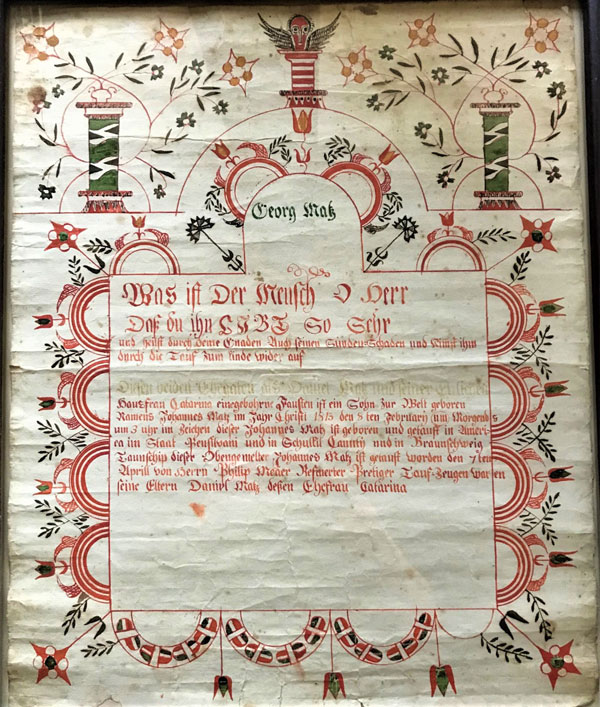
Was ist der Mensch .... [Schuykill County]: 1815. Folio, autograph broadside meas. appx 405 x 330 mm completed in five ink colors by Georg Matz. Very good; some small marginal tears and light spotting. Archival framing.
An elegant, understated, Taufschein by Georg Matz (working 1790 - 1818) from Schuykill County, Pennsylvania dated 1815. It is an accomplished, color, geometric design surrounded by sprigs of colored branches and flowers utilizing five different color inks. It was done for Daniel and Catarina Matz on the occasion of the baptism of their son Johannes by the Rev. Philip Meaer.
Offered by Palinurus Antiquarian Books, booth B5.
Karl Lagerfeld, Signed Fashion Design
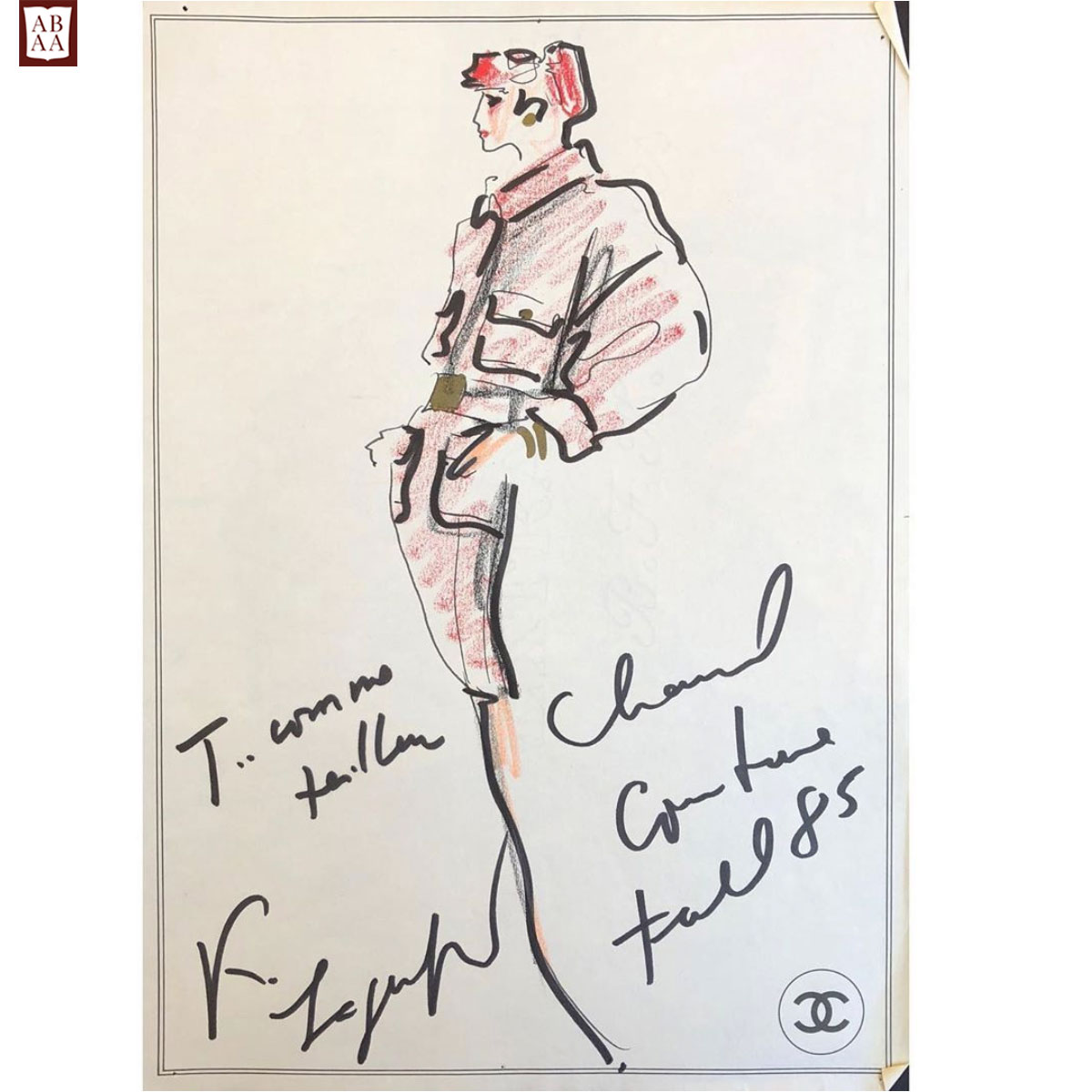
1985. Lagerfeld has signed at the foot and noted: "Chanel / H. C. / fall 85." On notepaper with the Chanel logo.
Offered by Schubertiade Music and Arts, booth A4.
1576 Printing of Magna Carta and Later Statutes in a Contemporary Calf Binding with Contemporary Annotations
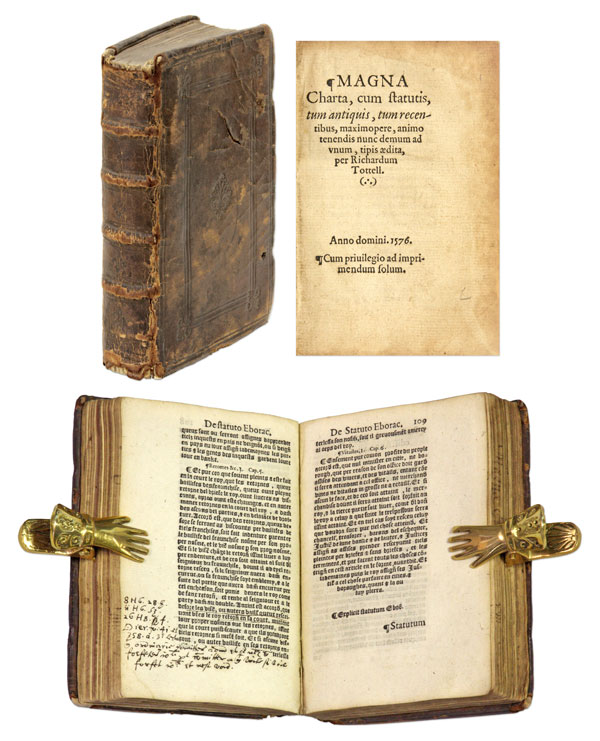
Magna Charta, Cum Statutis, Tum Antiquis, Tum Recentibus, Maximopere, Animo Tenendis nunc Demum ad Unum, Tipis Aedita, Per Richardum Tottell. Anno Domini. 1576. Cum Privilegio ad Imprimendum Solum. [Imprinted at London: In Fleetestrete Within Temple Barre at the Signe of the Hand and Starre, By Richard Tottel, The 8. Day of March. 1576]. [vii], 247 ff. Blank endleaf preceding Fol. 1 lacking. Octavo (5-1/2"
x 3-3/4").
Contemporary paneled calf, raised bands to spine, early hand-lettered title to fore-edge ties lacking. Light rubbing and a few minor gouges, cracks, and nicks to boards, moderate rubbing to extremities, spine ends worn, corners bumped and somewhat worn, pastedowns and free endpapers lacking, later armorial bookplate to verso of front board, fragments of an illuminated manuscript Bible used as printer's waste at hinges, attractive woodcut decorated initials. Moderate toning to text, faint staining to a few leaves, annotations and underlining in early hand to margins of approximately 25 pages, light soiling and minor edgewear to title page.
* An early printing of the Magna Carta, which was first printed around 1508 by Richard Pynson. It also includes the Charta de Foresta of Henry III, the Statutes of Merton and Marlebridge, the Statutes of Edward I and other statutes through the fourteenth regnal year of Elizabeth I, which are digested by topic. Among the most notorious statutes are those of Edward concerning Jews, including the Edict of Expulsion (1290), which banished them from England. Other statutes relate to women, wills, forcible entry, "Fraudulent Deedes" and other topics. The text is mostly in Latin or Law-French, then in English after Fol. 119. The annotations range from a few words to a sentence or two. About half of these are interpretive in nature, the others are references to statutes and cases. Beale, Bibliography of Early English Law Books S18.
Offered by The Lawbook Exchange, booth C25.
The Seven Hot Springs at Hakone
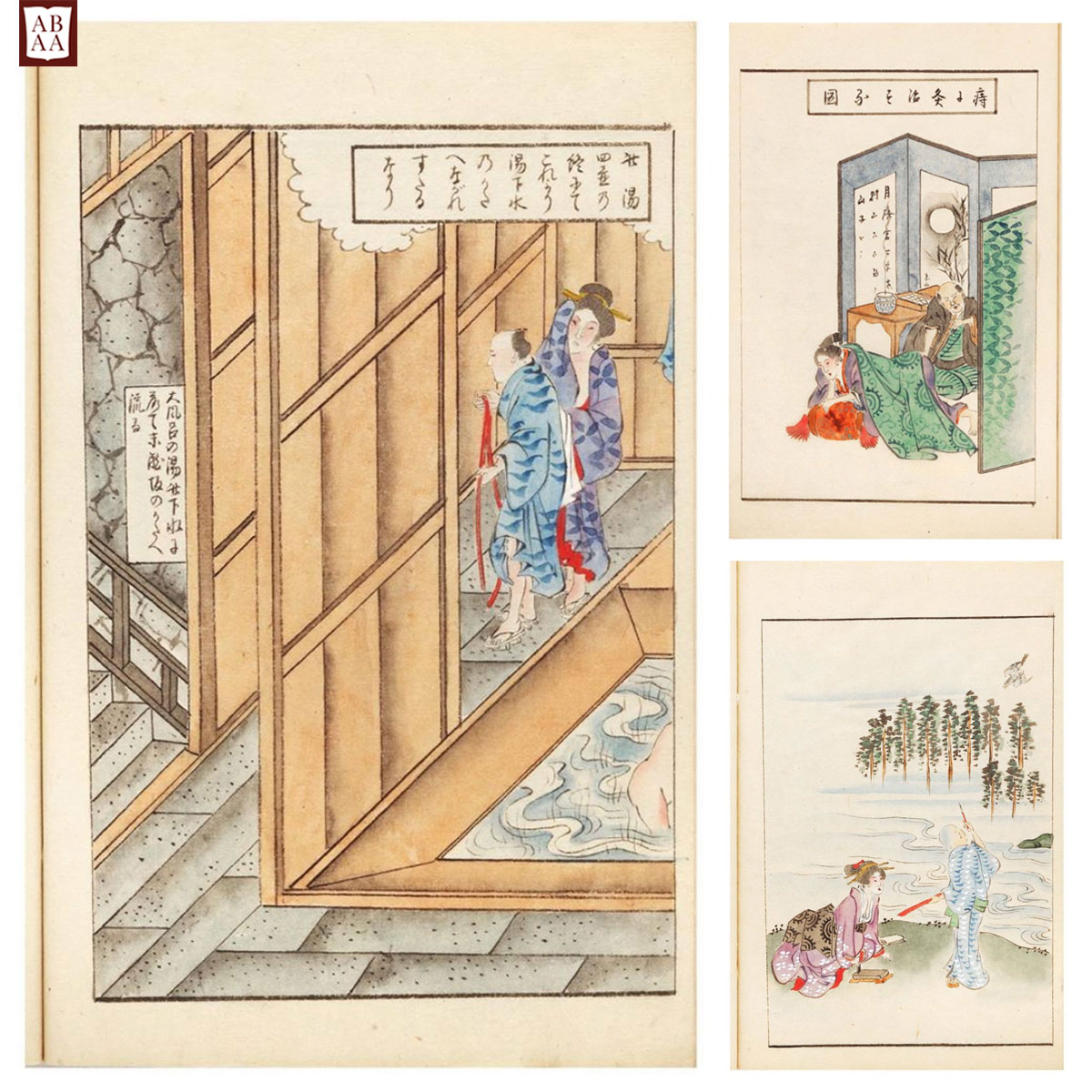
Manuscript on paper, entitled on first leaf of Vol. I “Shichito no shiori” [“Stories about the Seven Hot Springs {at Hakone}”].
34 painted scenes, using brush and colors, on 136 pages. Japan, ca. 1811 or shortly thereafter.
Offered by Jonathan A. Hill, Bookseller, booth A19.
Lieutenant George Walker Dyall (Dyail) Jones
(Battle of Monmouth) Sketch of the Skermish between ye Rear of the British Army under the Command of his Excellency Genl: Sir H. Clinton and the Advanced Corps of ye Rebel Army June 28th 1778
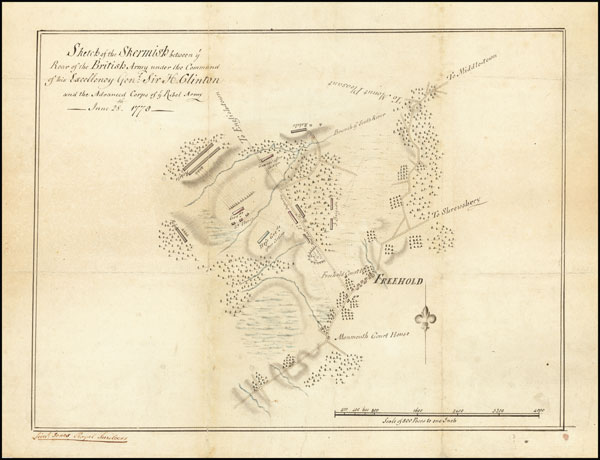
n.p. (New Jersey?) / 1778. 16 x 11 inches sheet size.
Offered by Barry Lawrence Ruderman Rare Maps, booth A6.
FIRST EDITION OF THE KING JAMES BIBLE - THE "GREAT SHE" BIBLE
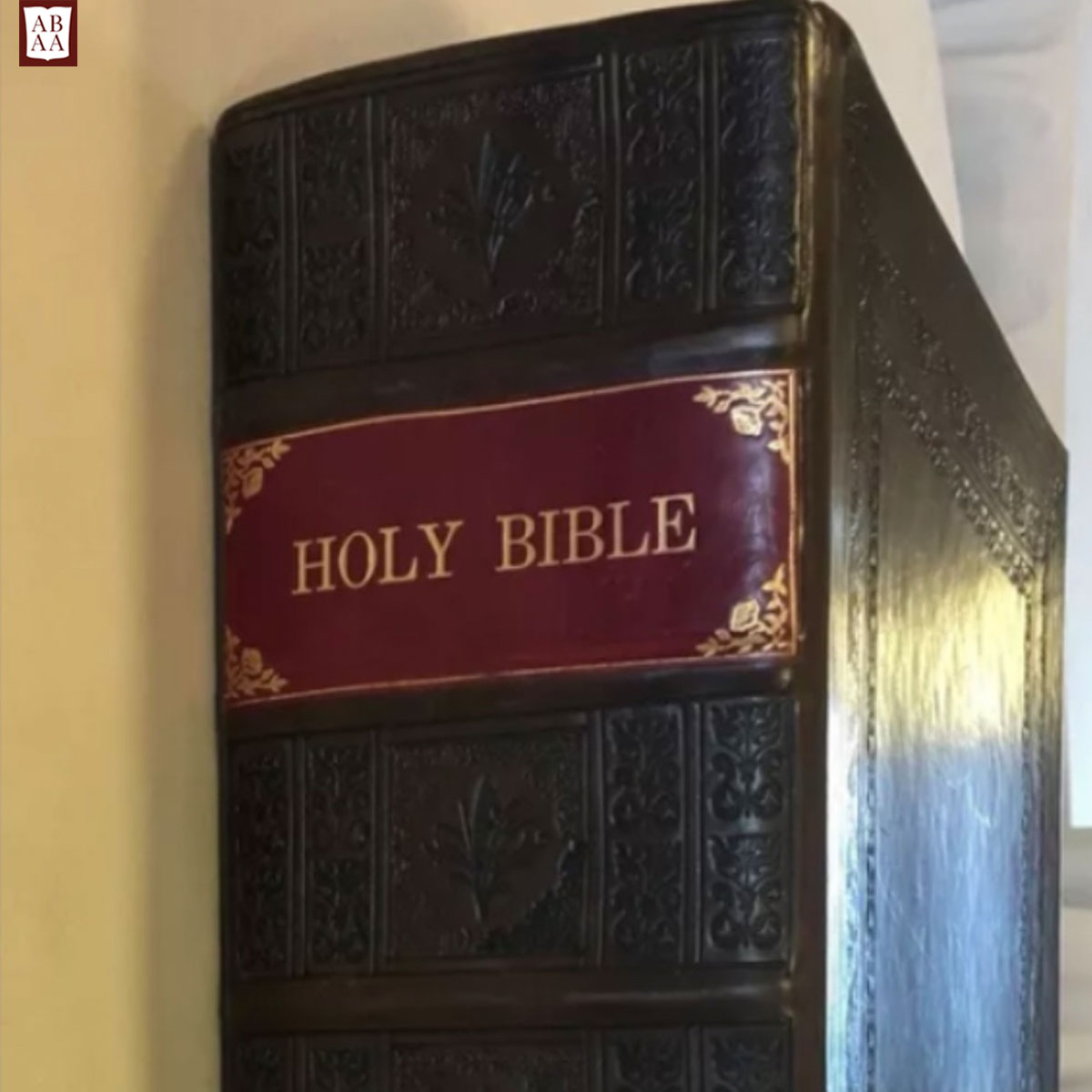
First edition of the famed work which is both one of the greatest works in the English language and one of the most beloved and influential translations of the Scriptures. The second issue with the typo in Ruth 3:15 corrected from "he" to "she", thus earning this state the nickname of the "Great She" Bible.
Beautifully restored in a fine leather binding and custom box.
Offered by Kubik Fine Books, booth E13.
The 60th annual New York International Antiquarian Book Fair takes place at the Park Avenue Armory over the weekend of March 5-8, 2020.
